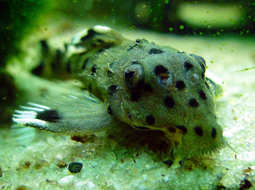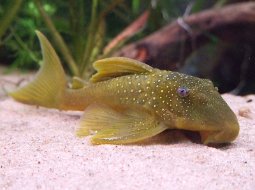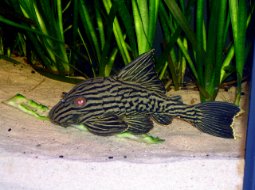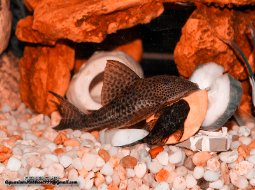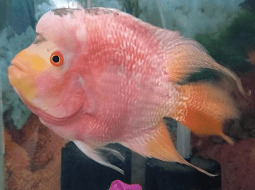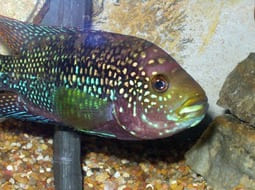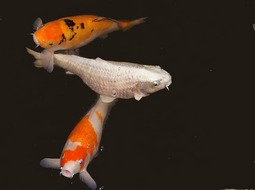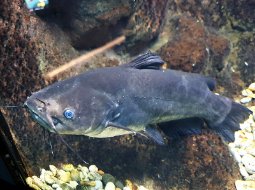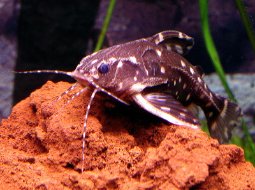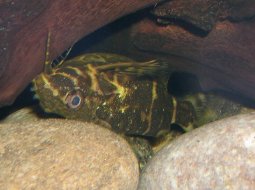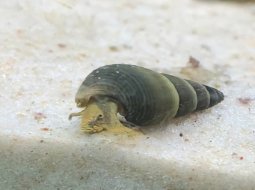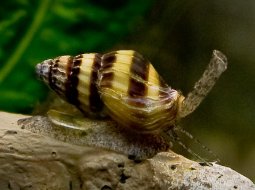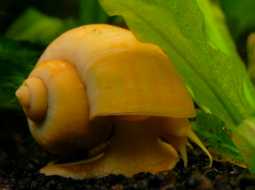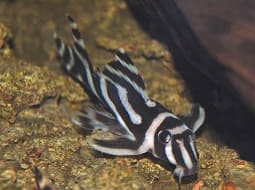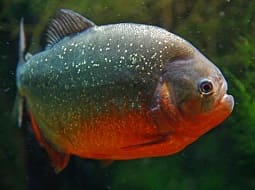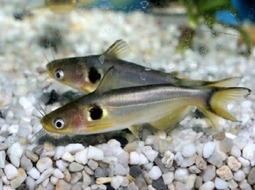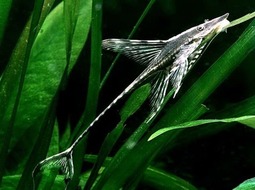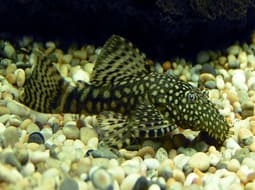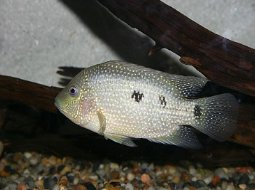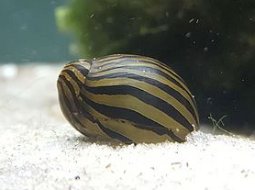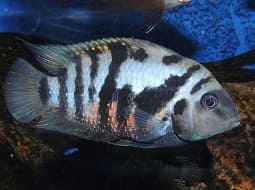
Loading Aqualapp ...
Care and Compatibility of Green Terror - Andinoacara rivulatus
Introduction
Andinoacara rivulatus, commonly known as the Green Terror cichlid, is a species of cichlid native to the Pacific slope of South America, specifically in rivers and streams of Ecuador and Peru. These fish inhabit freshwater environments, particularly areas with rocky substrates and vegetation. Their striking appearance and unique behavior make them a popular choice for cichlid enthusiasts.
Behavior
The Green Terror cichlid is known for its territorial and sometimes aggressive behavior, especially during breeding and when defending its territory. While it can display aggression towards other fish, temperament can vary among individuals and aquarium conditions. Providing them with sufficient space and appropriate hiding places can help reduce aggressive behavior.
Sexual Dimorphism
Sexual dimorphism in Andinoacara rivulatus is subtle but observable. Males tend to be slightly larger and have longer, more pointed fins than females. During breeding season, males may exhibit more intense colors and courtship patterns to attract females.
Reproduction
The breeding of the Green Terror cichlid is a fascinating experience. During the breeding season, the female and male prepare a spawning site and aggressively defend their territory. After spawning, both parents will care for and protect the eggs and fry until they are large enough to fend for themselves. It is recommended to provide them with a nutritious diet and appropriate water conditions to encourage successful breeding.
Aquarium Conditions
Andinoacara rivulatus, commonly known as the Green Terror, requires a spacious aquarium with plenty of room to swim and explore. They prefer a sandy substrate and lots of rocks and driftwood to provide hiding spots and spawning areas. They also appreciate dense, sturdy vegetation.
Feeding
The Green Terror is an omnivorous cichlid and feeds on a variety of foods in its natural habitat. In the aquarium, they can be fed a balanced diet that includes high-quality commercial foods, such as pellets and flakes specifically formulated for cichlids. Their diet can also be supplemented with live or frozen foods, such as shrimp, larvae, and small fish. Providing a varied diet will help maintain their health and vitality.
Complexity
Caring for Andinoacara rivulatus is moderately easy. They are hardy, adaptable fish that can tolerate a wide range of water conditions. However, they are territorial and may display aggressive behavior towards other fish, especially during breeding.
In case you need more help, or if you want to know into any topic related to the Andinoacara rivulatus (Green Terror) and even any other species you can use the forums to ask what you need.
To do an analysis more detailed about coexistence and behavior of Andinoacara rivulatus (Green Terror) use the Aquarium simulation tool, if you do this you can test different ways to combine the Green Terror with other fishes giving the dimensions and space on you aquarium, on this way you can known the optimal configuration for keep the fishes that you want.
You can also find out the 32 species compatible with the Andinoacara rivulatus (Green Terror) can live together.
Note: The parameters of the water such as PH and temperature are also used to calculate the compatibility of the species.
Compatible species (32)
Compatible (7 Species)
Compatible without any restriction
Knowing Yourself From Small (6 Species)
They can live together if they have known each other since they were very small, that is, they grew up and grew up together. it does not work in all cases, there may be exceptions.
Similar Sizes (1 Species)
They can coexist if they are the same size or very similar sizes, it does not work in all cases, there may be exceptions.
With Reservation (15 Species)
These fish know not to eat other fish with an exoskeleton, but you might try to eat it.
Las especies territoriales por lo general pueden convivir con especies protegidas con coraza, ya que no pueden hacerles daño por su dura piel, lo que si hay que tener en cuenta es tener un acuario con dimensiones favorables para que cada pez pueda delimitar un territorio, ya que la mayoría de peces acorazados son también peces de fondo y les gusta estar buscando lugares donde ocultarse.
Compatible in some cases, it depends on the nature and personality of the fish.
Showdown over territory (1 Species)
Fish can live together as long as the space is spacious enough to delimit a territory, otherwise there may be aggressions for competing for the territory.
Considerable size difference (1 Species)
They can coexist while they are similar in size or the size difference is not very abysmal, since as the fish grows it increases the chances of eating its partner that did not grow much.
Compatible if space is enough (1 Species)
Green Terror
Andinoacara rivulatus
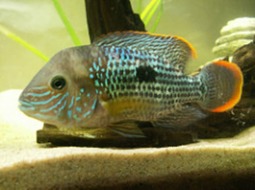
- Ph: 6 - 8
- Temperature (c°): 24 - 30
- Measures: 20 cm - 25cm
- Aquarium Capacity:
175 Liters - 46 Gallons - Alimentación: Omnivores
- Colores: Blue, Green, Orange
- Comportamiento: Active, Aggressive, Territorial
- Habitad: American
- Preferencias del Acuario: Rocks
- Tamaño: Big
- Taxonomía: Cichlids, Fish
- Tipo de Agua: Sweet water
- Velocidad de nado o movimiento: Normal
- Zona de Nado: Aquarium background, Swim in the middle of the aquarium

.jpg)
